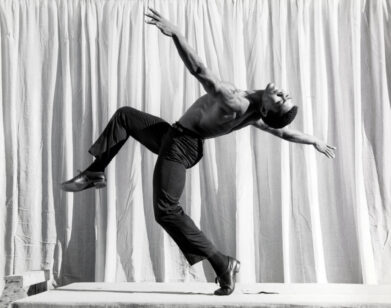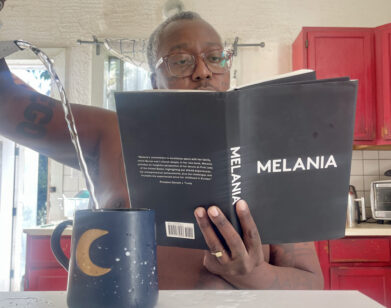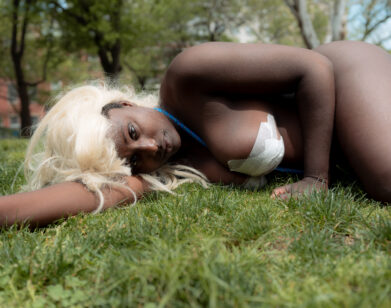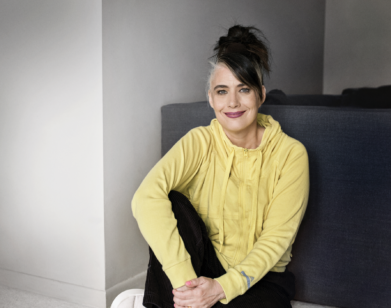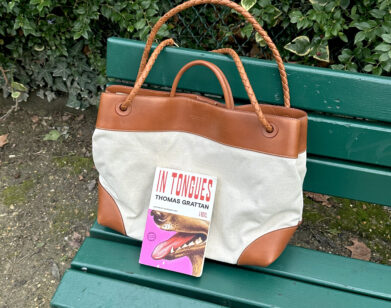IN CONVERSATION
Adam Baran and Brontez Purnell on New York’s Lost Cruising Spots
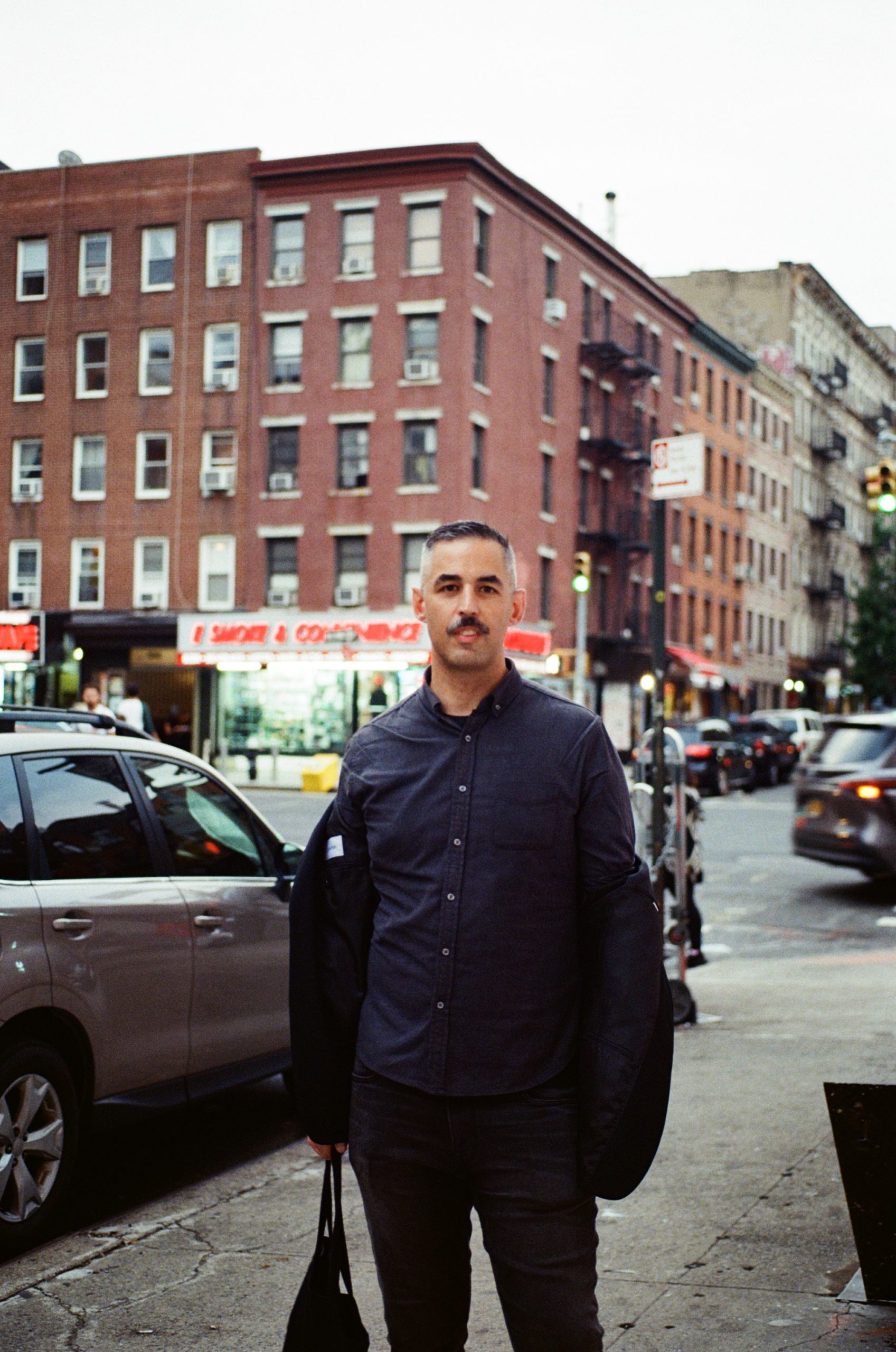
Photo by Thom Hilton.
In the spring of 2020, the Brooklyn-based filmmaker Adam Baran visited the site of the September 11th attacks in Manhattan to film Trade Center, his recently-released documentary short, by handheld camera. Over the course of its fleeting 8-minute run, the film pulls back the veil on an alternate history of the building as a cruising site, frequented by all manner of working men on lunch breaks and late nights. “It’s interesting that the mythology of 9/11 actively erased this whole other part of the story of the World Trade Center,” says Baran. Through interviews with five men who came of age frequenting the scene at the World Trade Center, the film revives memories of the New York landmark that are almost impossible to imagine today. In the wake of the attacks, the rise of security culture and increased policing made the kind of impromptu run-ins that Baran’s subjects remenisce about feel like relics of a bygone era. To mark the 20th anniversary of the attacks, Baran talked to his friend, the author and cruising connoisseur Brontez Purnell, about the City’s forgotten cruising history, the role of the internet in transforming spontaneous sex, and legacy of the World Trade Center.
———
BRONTEZ PURNELL: What’s your full name, sun sign, moon sign, and rising sign, and how do you feel that affects your work?
ADAM BARAN: Um.
PURNELL: I’m asking you this because I know you hate astrology.
BARAN: [Laughs] My full name is Adam Bernard Baran. I’m a Pisces on the cusp of Aries, but I don’t know about rising, moon, or what have you. But thank you for that question.
PURNELL: That’s funny that you’re a Pisces. I never thought about it, but we’re Kurt and Courtney.
BARAN: Who is who? You’re Kurt?
PURNELL: No, you’re Kurt since you’re the Pisces and I’m Courtney because I’m the Cancer.
BARAN: Also because I have Crohn’s Disease, just like Kurt did.
PURNELL: I thought you were about to say, “I have millions of dollars like Kurt.” But you’re like, “No, I suffer.” Anyway, let’s get to the meat and potatoes of it. Give me a general overview of this project. When did you get the first inklings of it, and where are you now with it?
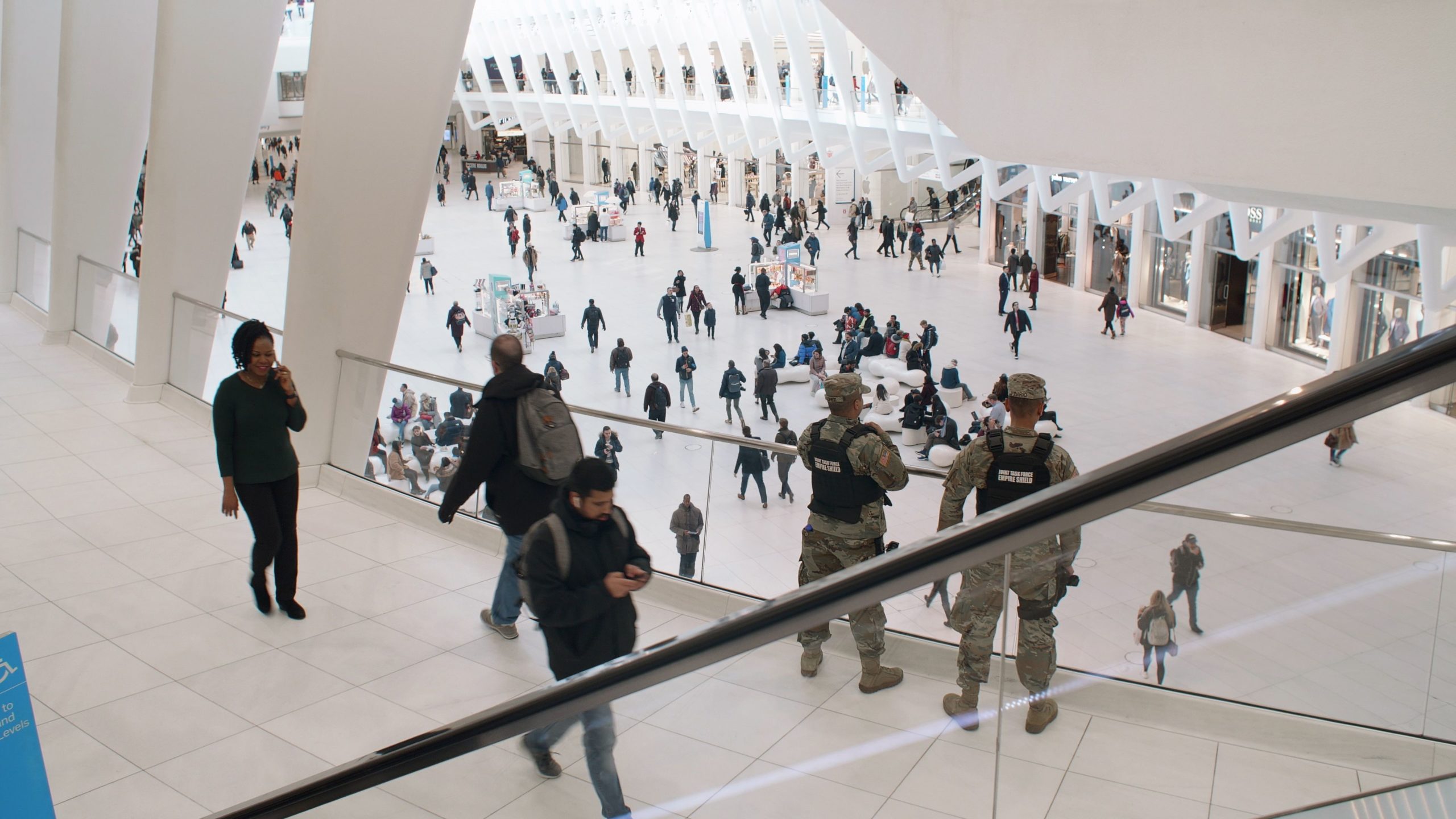
BARAN: We have a mutual friend named Billy Miller who is the editor of Straight to Hell magazine, which is a publication that chronicles true sex stories from gay and bisexual men. He wrote an essay titled “The Towers of Cum & Horndogs of Yore” in a book called Petite Mort: Recollections of a Queer Public. The essay was all about secret cruising spaces at the World Trade Center. I’d always been obsessed with cruising, particularly because it’s this silent language with all these hidden rules that you have to figure out on your own. I was also really fascinated by the idea that there may have been people who were cruising in the World Trade Center when the towers were attacked on 9/11. It was interesting that the mythology of 9/11 actively erased this whole other part of the story of the World Trade Center. In early 2020, I was thinking about how to bring it to life. I went to MOMA and was watching the restorations of Fred Halsted’s ’70s pornos and there’s a lot of voiceover with people walking around. I said to myself, “Why don’t I go back and do something like this at the World Trade Center?” So, we toured for a day in February of 2020, and surreptitiously shot everything. Then I recorded Billy reading his essay. I just started reaching out and interviewing people about their experiences cruising at the World Trade Center. I found a bunch of people I knew who’d had experiences and wove those together, and that became the film.
PURNELL: What was your process of finding people who used to cruise there? How old are they?
BARAN: I found people through my network. I started to look through my friend list on Facebook, and asked around until I managed to find four people, in addition to Billy, who would talk to me. They were all in the same age range, like 40s to 50s. They were all cruising in the World Trade Center in the prime years, from the late ’80s up until the attack on September 11.
PURNELL: It’s interesting to trace the connection between the freedom of the past and the heavy policing of these spaces today. You used to be able to cruise in the World Trade Center, but today we live in this security culture that has made public cruising even more perilous. How do you view that?
BARAN: There was something scary about going back to the World Trade Center. We were making this film, not necessarily secretly, but definitely in a careful way. People walk around with cameras all the time, so nobody really clocked us, but there’s this constant surveillance presence when you go in there. Everything is colored by this single event. You see it in the film— there are cameras and cops everywhere. What Billy Miller says in the film is that the attacks changed cruising culture for the next 10-15 years in New York. It used to be that there were secret bathrooms all over the city where you could go and hook up in the middle of the day, or late at night. Now, you have to show ID to get into those places, and people are constantly afraid of terrorism.
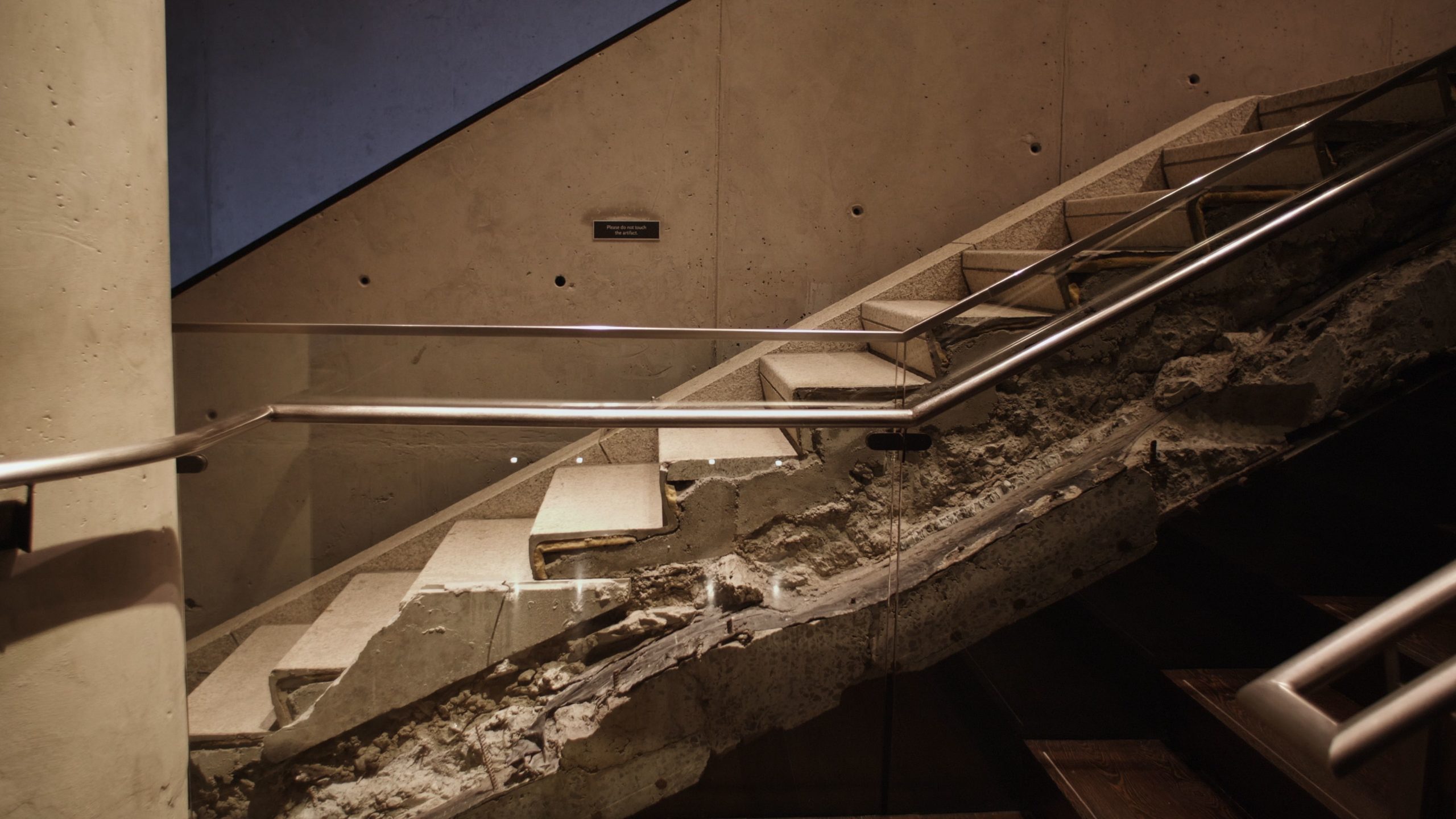
PURNELL: Security culture or not, another thing that has changed the shape of cruising is the fact that it’s now online-based, meaning we’ve lost the camaraderie of having a secret club that forms in public spaces. Did any of the men speak to this? Were there any men that still see guys that they used to cruise with?
BARAN: So much gets left on the cutting room floor. There was one story that I didn’t include that was about a porno store near the World Trade Center. People would go cruise in the store during the lunch hour, and it would be full of Wall Street white guys mingling with men of color and people on their day gigs. I didn’t hear any love stories. Once we released the film trailer at South by Southwest, we got a lot of comments from people being like, “Oh, I would used to cruise there every day, I wish I’d talked to you.” That inspired me to keep making work like this and collecting stories. There’s this whole other history has never been recorded.
PURNELL: Are there plans to expand the project? Do you plan on doing anything else with these oral histories?
BARAN: Yeah. During the pandemic, I started keeping a little archive focused on stories about places that don’t exist anymore— not necessarily cruising spaces, but spaces where queer people met to socialize. I am planning to make a series of these films. I’m producing a film about a cruising beach in Singapore, I’ve collected stories about cruising at the Metropolitan Opera, and at this private leather club that was in Chelsea called The Nine Plus Club that was part of the gay motorcycle club scene in the ’60s. I’m just obsessed with these spaces, and what happens when they’re gone.
PURNELL: Is there anything you’d like to add?
BARAN: It’s interesting to talk to you about this because you’re so good at chronicling your own sexual experiences. Do you have a story about a space that was really meaningful to you sexually that doesn’t exist anymore?
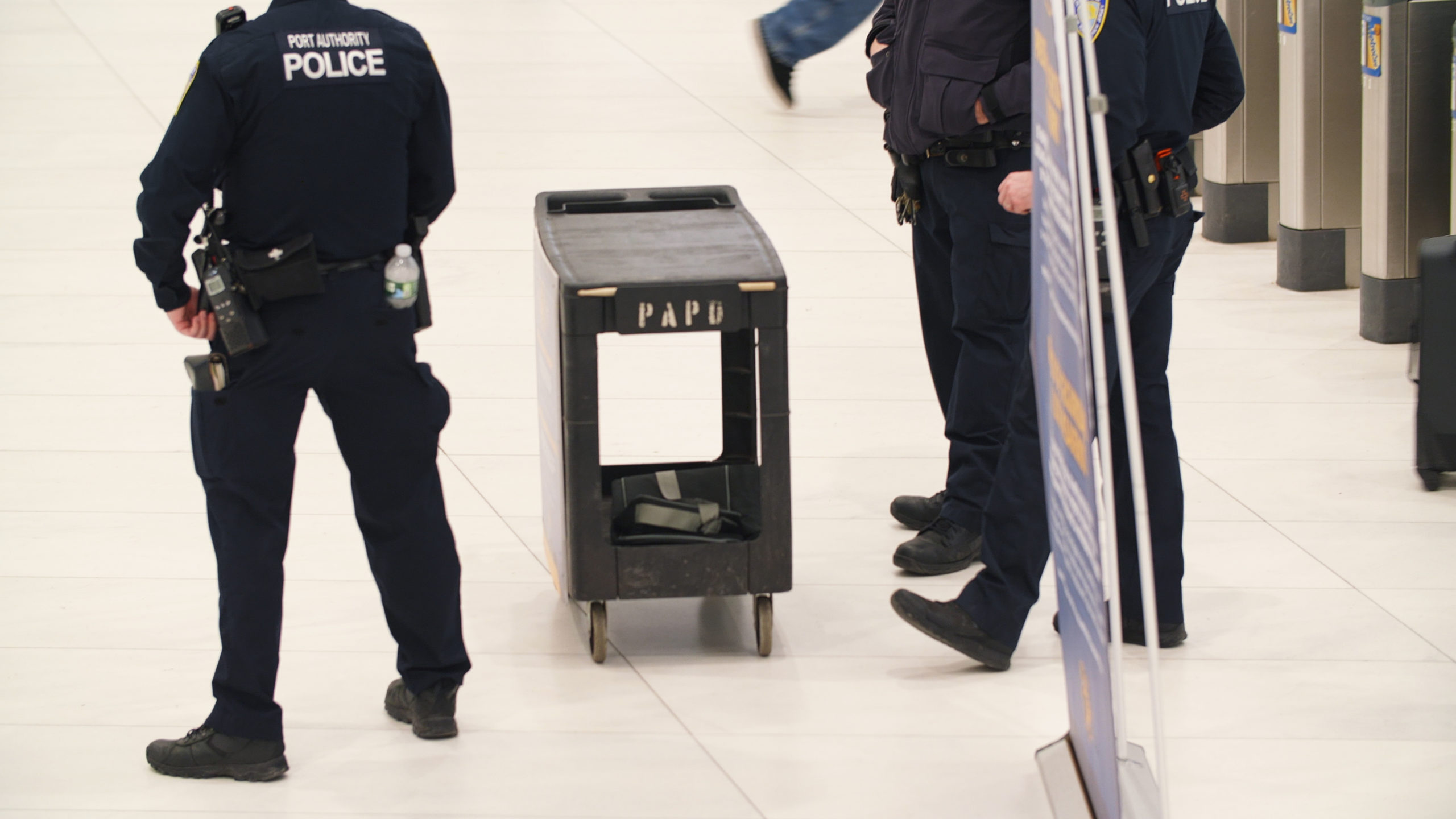
PURNELL: When I came to Oakland, my older gay cousin, who was here during the ’70s and ’80s, took me under his wing. He was like, “Yeah, right before the AIDS epidemic, there were these shrubs all around Lake Merritt and guys would just bone in the shrubs all the time.” I moved there years after that, but I do remember visiting and seeing all these daddies around. I remember getting fucked by this older French dude named Patrick. As tech took over and the economy collapsed, the variety of people you’d see cruising was decimated. We always move from more options to fewer options as life goes on. Especially once your hair starts graying and people realize they can’t extinguish the fire in your eyes anymore. [Laughs]
BARAN: The experiences I had then are nowhere near as interesting as the ones I’m having now. I’ve been using that app Sniffies. Do you know it?
PURNELL: Yeah, it was way more lit during quarantine. But yes, I’ve been known to hang out there.
BARAN: I found out there’s a park near me where people cruise. I can look at the app and see, “Oh, there are 13 people over there. I better get my ass clean and get over there.” That’s been really fun. When I was younger, I would have been too afraid. Even though tech is terrible and it’s made most of our lives immeasurably worse, I am enjoying these experiences.
PURNELL: I like the idea of going to a place and digging through men, like a thrift store. As Sniffies grew more popular, I started seeing all the spots I would go to show up there. I think it brings this really horrible dynamic where people want to see pictures of the people cruising before they show up, as opposed to just going there because you’re horny. But with this movie, I do feel a new renaissance and a new era coming. So, thank you for your work. I love you dearly and I’ll talk to you soon.
BARAN: Thank you.


